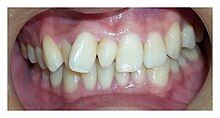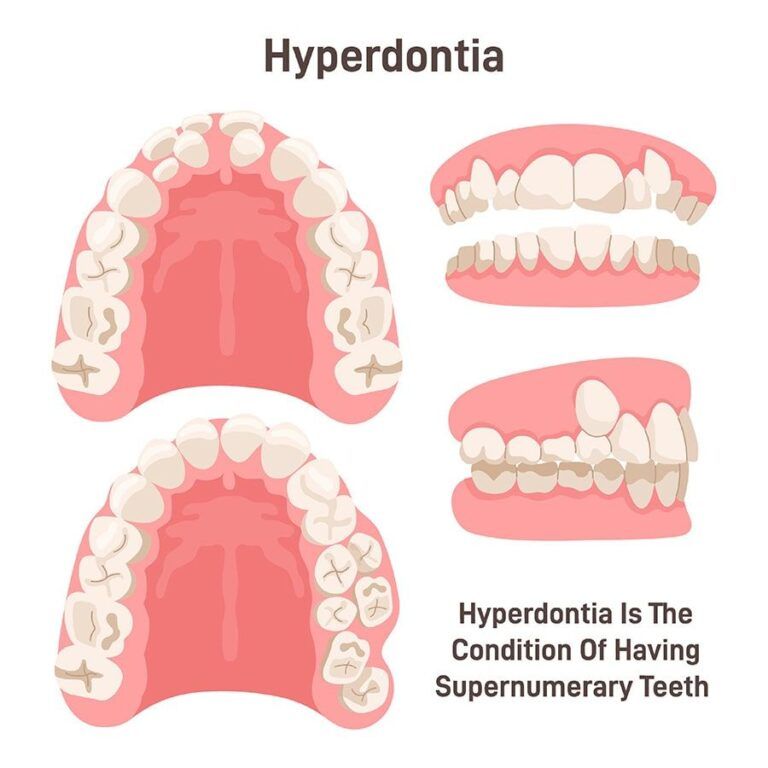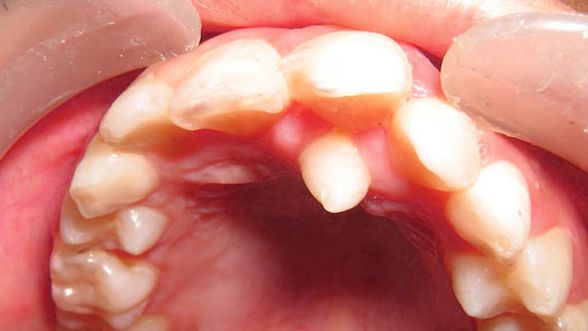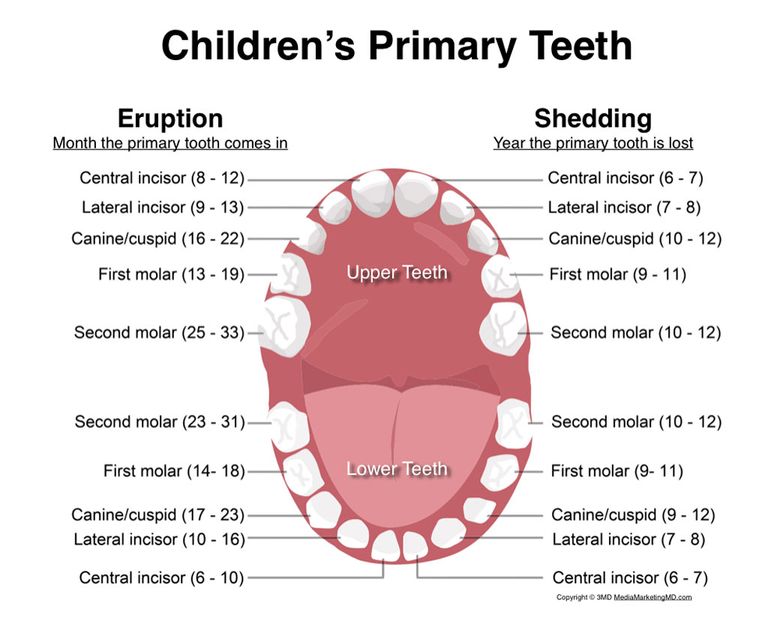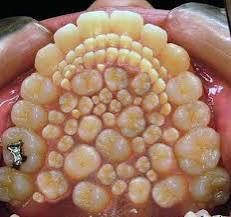Hyperdontia means excess number of tooth in a particular dentition. It is a condition of possessing supernumerary teeth, or simply put teeth that appear in addition or increment to the usual regular number of teeth ( such as 32 in the average adult). Supernumerary teeth can appear or observed in any area and region of the dental arch whether upper or lower and can even affect any dental organ.
The opposite dentition of hyperdontia is hypodontia, where there is a natural congenital lack of teeth. Hypodontia is a condition observed more commonly than hyperdontia.
The scientific definition of hyperdontia is "any tooth or odontogenic structure that is formed from tooth germ in excess of usual number for any given region of the dental arch." The additional teeth, which may be few or many, can occur on any place in the dental arch. Their arrangement may be symmetrical or non-symmetrical.Source
Symptoms includes observation of supernumerary teeth erupting out of the gum or in the mouth structure
Complications may include Supernumerary teeth growing into the gum
Causes of supernumerary teeth are mostly genetic in nature which can also include, Gardner's syndrome, Ehlers-Danlos syndrome, Cleft palate, Cleidocranial dysplasia or any other forms of genetic disorders.
Supernumerary tooth, particularly when observed in young children, is related to disturbance of the maxillary incisor area.
This commonly leads to the impaction of the incisors within the mixed dentition stage. Things that are considered include many other factors such as: the patient's age, number or quantity, morphology, growth orientation or pattern and position or location of the supernumerary tooth.
Another thing is that, the presence of an extra tooth can affect, slow down or impede the eruption of adjacent additional or even normal teeth. Therefore, supernumerary tooth when spotted must be approached with necessary action and appropriate treatment plan, in order to avoid any likelihood of an incisal crowding.
In some patients, the additional teeth can erupt far away from the tooth germ of the dental arch, such as within the maxillary sinus. Even an extra teeth may also migrate to another different location entirely after development. In some cases, supernumerary teeth may result in the formation of cysts. Tooth crowding is also frequently observed in people with hyperdontia or supernumerary teeth.
"A supernumerary tooth lying among, lingual to, or buccal to the maxillary or mandibular molars. Paramolar is a developmental anomaly and has been argued to arise from a combination of genetic and environmental factors. Supernumerary teeth can be found in almost any region of the dental arch. They are most frequently located in the maxilla. The crowns of supernumerary teeth may show either a normal appearance or different atypical shapes and their roots may be completely or incompletely developed."Source
Factors Causing Supernumerary Teeth
Hereditary factors have been established by many researches along with some evidence relating to environmental factors which eventually lead to this condition.
Although a single excess or tooth increment is relatively common, multiple hyperdontia is not uncommon and rare in people that have no other associated diseases or syndromes.
Many supernumerary teeth do not erupt at times, though they may bring about delay in eruption of nearby teeth or even cause other dental or orthodontic problems. Molar-type extra teeth are the most commonly spotted type. Dental X-rays are very useful and are often used to investigate and diagnose hyperdontia.
Some researchers suggested that supernumerary teeth originate from a third tooth bud which appears from the dental lamina close to the regular tooth bud or even possibly from splitting or dissection of the regular tooth bud itself.
In a nutshell, the presence of supernumerary teeth in deciduous (baby) teeth are less common and noticed than in permanent teeth.
Happy Blogging and Reading 💥💥💥💥
Video from dentistry n more YouTuber
